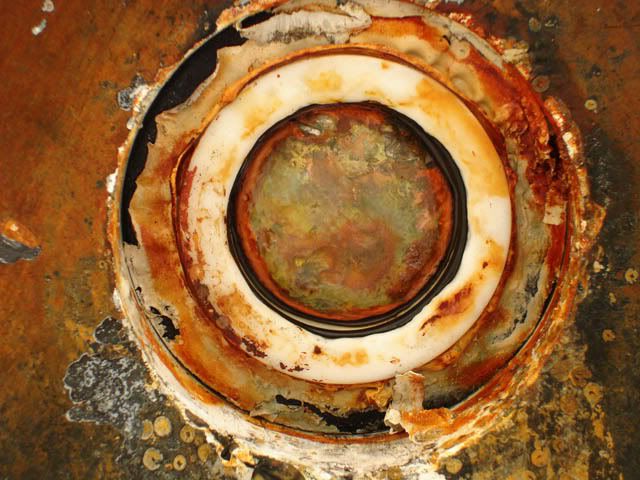I hope that someone here might be able to help me or point me in the correct direction where I might find expert advice. I'll accept rebukes if I am out of line in this forum as well.
I recently had a solid stainless steel rudder stock fail and break off at sea. It broke at the point where it enters the hull and I have some closeup detailed photographs of the remaining rudder stock that I would like to have expert opinions on. Losing a rudder at sea in a fin-keel sailboat was not a fun experience at the boat has absolutely no direcdtional stability. I was just beginning my circumnavigation and must admit that I have more than a slight feeling of unease. If galvanic corrosion or some other avoidable condition caused the rudder to fail that would be one thing, but what if the rudder stock material is not to specifications or the rudder is mis-engineered, then my replacement rudder might fail when 800 miles out to sea instead of 8. I was lucky that my incident occurred in mild conditions and when the rudder wasn't under much stress - but that probably won't be the case should that occur again.
I'd appreciate pointers on where I might get some advice, and will post links to 2 of the pictures in this post, just in case someone here might be willing to assist. At the least, the pictures might provoke some discussion amongst the pundits.

Closeup of stock after cursory cleaning

Taken from directly below upon haulout showing rudder through-hull
I recently had a solid stainless steel rudder stock fail and break off at sea. It broke at the point where it enters the hull and I have some closeup detailed photographs of the remaining rudder stock that I would like to have expert opinions on. Losing a rudder at sea in a fin-keel sailboat was not a fun experience at the boat has absolutely no direcdtional stability. I was just beginning my circumnavigation and must admit that I have more than a slight feeling of unease. If galvanic corrosion or some other avoidable condition caused the rudder to fail that would be one thing, but what if the rudder stock material is not to specifications or the rudder is mis-engineered, then my replacement rudder might fail when 800 miles out to sea instead of 8. I was lucky that my incident occurred in mild conditions and when the rudder wasn't under much stress - but that probably won't be the case should that occur again.
I'd appreciate pointers on where I might get some advice, and will post links to 2 of the pictures in this post, just in case someone here might be willing to assist. At the least, the pictures might provoke some discussion amongst the pundits.

Closeup of stock after cursory cleaning

Taken from directly below upon haulout showing rudder through-hull
